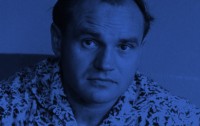Episodes (1959) for strings and 3 groups of percussion
In his Episodes, a composition only for string and percussion instruments (without wind instruments), Serocki tackled the problem of organizing the sound space in which music unfolded. He suggested a layout of instruments on stage that would make it possible not only to precisely plan the direction of sound movement, but also to facilitate interactions between various sound structures, each of which had its own characteristics and expression. The instruments were placed along horizontal lines (violas and double basses), a V-line (cellos) as well as semicircles (1st and 2nd violins) and points (three percussion groups). Consequently, in concert the listeners have the impression that that groups of sounds – differing in terms of pitch, rhythm or colour – move across the stage or that the instruments pass successive notes among each other.
In the first episode – “proiezioni” (projections) – Serocki shows various ways of arranging sound groups. In the second – “movimenti” (movements) – he presents a “spatial counterpoint” of the three percussion groups. In the third episode – “migrazioni” (migrations) – featuring only string instruments, he achieves a very vivid effect of the movement of sounds through space. In the fourth episode – “incontri” (encounters) – he brings together all his ideas, turning the episode into a riveting finale.
Episodes is also a piece in which Serocki tackled the problem of organizing pitches. He arranged them in twelve-note fields and complexes, trying to develop his own rules of their arrangement – different from both the traditional models and the rules of Darmstadt serialism, which after several attempts (e.g. in Musica concertante) he concluded were not satisfactory.
Episodes was performed and scored a great success during the final concert of the 1960 Warsaw Autumn. In the same year the piece won the 2nd Prize (1st Prize was not awarded) at the 5th Grzegorz Fitelberg Competition, beating Krzysztof Pendrecki’s Threnody for the Victims of Hiroshima, which later became famous.



